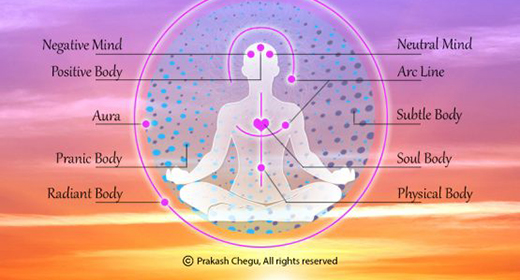by Marta Zaraska: Highly processed foods resemble drugs of misuse in a number of disturbing ways.
 Given the option, most rats will choose sugar instead of cocaine. Their lust for the carbohydrate is so intense that they will go as far as to self-administer electric shocks in their desperation to consume sugar. Rats aren’t alone in this drive. Humans, it seems, do something similar. People who’ve had bariatric surgery sometimes continue to overindulge in highly processed foods, those made from white flour, sugar, butter, and the like, even if it means later enduring vomiting and diarrhea. Daily snacking on processed foods, recent studies show, rewires the brain’s reward circuits. Cravings for tasty meals light up the brain just like cravings for cocaine do, prompting some researchers to ask whether products such as fries or cookies can trigger addiction akin to that associated with drugs or alcohol.
Given the option, most rats will choose sugar instead of cocaine. Their lust for the carbohydrate is so intense that they will go as far as to self-administer electric shocks in their desperation to consume sugar. Rats aren’t alone in this drive. Humans, it seems, do something similar. People who’ve had bariatric surgery sometimes continue to overindulge in highly processed foods, those made from white flour, sugar, butter, and the like, even if it means later enduring vomiting and diarrhea. Daily snacking on processed foods, recent studies show, rewires the brain’s reward circuits. Cravings for tasty meals light up the brain just like cravings for cocaine do, prompting some researchers to ask whether products such as fries or cookies can trigger addiction akin to that associated with drugs or alcohol.
Yet the issue is by no means settled. An ongoing debate persists over whether these foods are truly addictive. Processed foods might provoke compulsive behaviors that reinforce the need to consume more, but do they really have mood-altering effects, another criterion used to define an addiction?
Answers to these questions are complicated by the enormous variety of foods we consume. There is no single opiatelike substance that can be identified as leading someone to become a food addict. Arguments in favor of food addiction suggest that if carbohydrates and fats are mixed together in unnaturally large doses, this creates a rapid “delivery system” for nutrients that results in physiological effects on the brain’s reward system that resemble those produced by cocaine or nicotine.
To examine how this affects actual behaviors, researchers developed a measurement to examine the strong pull that highly processed food exerts on humans. In 2009 the Yale Food Addiction Scale emerged. It is used to assess whether a person displays behavioral patterns that would merit fries, shakes and other palatable foods being classified as addictive substances.
Using this measurement technique, a 2022 meta-analysis suggested that 20 percent of adults are addicted to food. People in this group go out of their way to obtain their favorite foods and often eat to the point of feeling physically ill. They experience withdrawal, fail to quit eating certain foods and continue their consumption pattern despite adverse consequences, such as disruptions to their daily routines and social activities. These are all criteria set out by the Yale Food Addiction Scale, which is adapted from measures used to gauge substance use disorders. The definition of food addiction is separable from obesity. Surprisingly, many people who tick the boxes for food addiction maintain a typical weight. If anything, food addiction is the closest cousin to binge eating disorder, says Alexandra DiFeliceantonio, a neuroscientist at the Fralin Biomedical Research Institute at Virginia Tech Carilion. Both cause people to exhibit a lack of control in the way food is consumed, but the definition for a substance use disorder also includes cravings, withdrawal symptoms and continued use despite negative consequences.
Critics of this research suggest that you can’t get addicted to something that’s essential to life. What’s more, while science has pinpointed nicotine in cigarettes and ethanol in wine or beer as the substances responsible for keeping people hooked, no such clear-cut equivalent exists for food. “It’s very difficult to prove that there are these nutrients in food that directly cause addiction,” says Johannes Hebebrand, a psychiatrist at the University of Duisburg-Essen in Germany.
Yet Ashley Gearhardt, a clinical psychologist at the University of Michigan, argues that highly processed foods are vastly different from what our ancestors used to consume. “Foods that are very high in fat and carbohydrate in a kind of an equal ratio—they don’t exist naturally,” she says. “It’s something that’s designed by food scientists in a laboratory to look a certain way, feel a certain way in your mouth, smell a certain way when you open the package.” A 2021 study showed, for example, that people with binge eating disorder exclusively overeat ultraprocessed foods. “People aren’t losing control over beans,” Gearhardt says.
Early research on rats suggested that sucrose keeps animals hooked. “They want more and more and more. Each day, they’ll show signs of craving,” says Nicole Avena, a neuroscientist at the Icahn School of Medicine at Mount Sinai. Sugars are present in many natural foods, from bananas to beets. Yet, as Avena points out, it’s all about packaging. A piece of fruit, she says, “has the appropriate amount of sugar in it, based on how much fiber it contains. Also, it has other nutrients that are going to minimize or mitigate the effects that that sugar might have on our brain.”
What matters, the scientists argue, is the dosage and the speed of absorption of a substance. Most people don’t consume pure ethanol, for example. Instead they opt for wine or beer, which contain a small amount of the addictive substance. (Most beer is more than 90 percent water.) Similarly, few of us indulge in sucrose by the spoonful. Nicotine also mixes with other ingredients and is carefully dosed. It’s naturally present in eggplants and tomatoes, but you won’t become an addict by indulging in vegetables.
When it comes to ultraprocessed snacks, sugar often goes together with fat—a combination that could make such foods even more addictive. A 2018 study by DeFeliceantonio and her colleagues showed that, compared with equally caloric foods containing only fat or only a carbohydrate, those made with both ingredients are far more efficient at activating the striatum, a part of the brain’s reward center that is implicated in addictions.
For a 2023 study, DeFeliceantonio and her colleagues randomly assigned 82 people to snack on either high-fat, high-sugar yogurts or low-sugar, low-fat ones for eight weeks. The scientists discovered not only that the first group’s preference for the healthier yogurts decreased after the trial but that their brain activation patterns changed, too. When they tasted fatty, sugary milkshakes, those who had been indulging in high-fat, high-sugar snacks had an increased response in their reward circuits, including the striatum. “Ultraprocessed foods are hijacking the brain in a way you’d see with addiction to drugs,” Avena says.
One of the hallmarks of drug addiction, she says, is the release of dopamine in the brain’s reward regions. The potency of a fatty, sugary treat in triggering this release was highlighted by a 2023 study in which scientists used positron-emission tomography on a small sample of volunteers. The results showed that indulging in a milkshake leads to a significant release of dopamine in healthy people that can be about one third of what is usually seen with amphetamines—a group of highly addictive stimulant drugs, such as “speed.”
The addictive potential of ultraprocessed foods may not relate just to dopamine, however. A 2023 study revealed the importance of the cannabinoid receptor 2 (CB2) in getting hooked on certain foods (in this particular case, chocolate-flavored pellets, because the subjects were mice). Rodents lacking these receptors in the brain are not only less likely to become addicted to cocaine or alcohol, the research showed, but also less prone to food addiction—a finding that may open new paths for treatment of binge eating.
Research on weight-loss drugs provides further evidence that overeating and substance misuse may share common brain processes. Semaglutide (sold under the brand names Ozempic and Wegovy) induces weight loss by mimicking the insulin-increasing gut hormone glucagonlike peptide-1 (GLP-1), and it could potentially aid those struggling with various addictions, too. Animal experiments suggest, for example, that it can reduce dependence on cocaine and opioids. “That supports the argument that foods and drugs, in many ways, can act on the same brain systems,” Avena says.
What’s more, both illegal drugs and processed foods can induce cravings in the same reward areas of the brain—as demonstrated by a 2023 functional magnetic resonance imaging (fMRI) study. When researchers showed pictures of cocaine to drug addicts or photographs of donuts to healthy people, the same brain regions—ranging from the ventral striatum and amygdala to the cerebellum—lit up in both groups. And the stronger the volunteers’ reported craving was, the more intense their neural response was as well.
Withdrawal symptoms, another classic feature of addiction, also seem to be present in connection with ultraprocessed foods. While it’s unlikely that anyone experiences physical shakes from quitting cookies, parents who attempt to restrict their children’s intake of sugar-sweetened drinks have reported symptoms such as headaches, irritability and social withdrawal in their kids. Similarly, adolescents instructed to abstain from their high intake of sodas for three days complained of decreased motivation and ability to concentrate—along with increased headaches.
Critics of the idea that certain foods may be addictive point out that treats such as burgers don’t induce the same kind of “high” that one might experience with opioids or alcohol. “This is totally missing in all the food addiction stories,” Hebebrand says. For her part, Gearhardt is not convinced. “By that principle, cigarettes are not addictive, right? You can drive your car while you smoke cigarettes. You can watch your children while you smoke cigarettes,” she says. She points to studies indicating that chocolate does have a psychoactive effect and can induce feelings of euphoria at least as much as intravenous nicotine given to smokers can.
In 2022 Gearhardt and DiFeliceantonio published an opinion piece in the journal Addiction arguing that highly processed foods should be classified as addictive based on a 1988 Surgeon General report on tobacco products. That document outlined scientific evidence behind cigarettes’ addictive nature, including their psychoactive effects and potential to trigger compulsive use. Similar evidence, the scientists argue, already exists for ultraprocessed foods. “If we apply that same criteria to this specific class of foods, it meets every single checkbox,” Gearhardt says.
Hebebrand worries, however, that rushing to classify certain foods as addictive could let the sugar industry off the hook too easily. “They can always say, ‘Well, this is a matter of debate; we don’t know if it really exists,’” he says. The industry has already sponsored research that argues against the existence of sugar addiction, which, for Gearhardt, suggests that it may be following “the playbook of the tobacco industry.” After all, nicotine wasn’t a clear-cut candidate for an addictive substance, either: it lacks significant mind-altering effects and is not found in large amounts in foods, and researchers don’t know the dosage at which it becomes addictive. As a result, and with the help of the tobacco industry, the addictive nature of tobacco was denied for decades. Considering ultraprocessed foods’ detrimental health effects—a 2021 meta-analysis showed such products raise mortality risk by 25 percent—Gearhardt argues that it’s better to chance misclassifying ultraprocessed foods as addictive than to fail to label them as such when warranted. “It’s cigarettes all over again,” she says.
ABOUT THE AUTHOR

a freelance writer based in France, is author of Growing Young: How Friendship, Optimism and Kindness Can Help You Live to 100 (Penguin Random House, 2020). She wrote “Shrinking Animals” in the June 2018 issue. Follow Marta Zaraska on Twitter









































